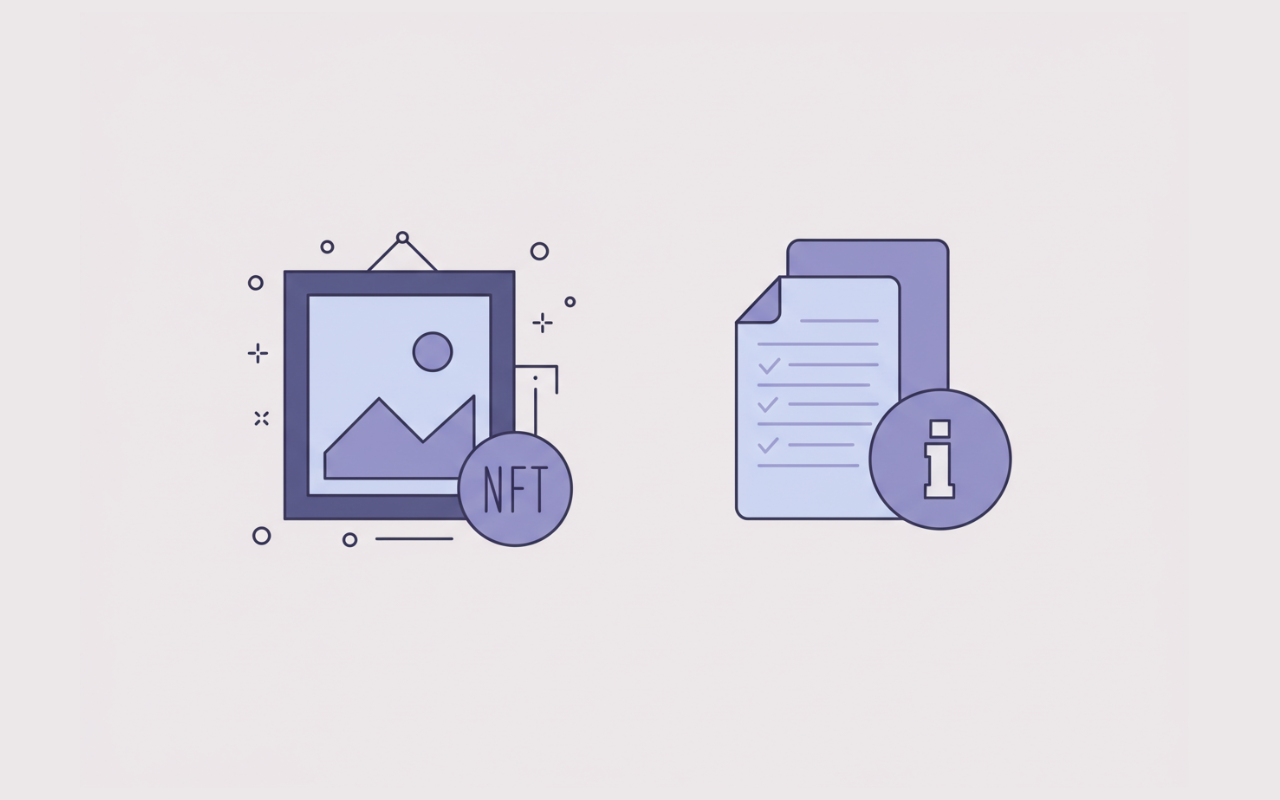In the world of blockchain and digital assets, NFTs (Non-Fungible Tokens) have taken center stage, transforming how we think about art, ownership, and digital collectibles. If you’ve ever wondered what makes an NFT unique or how it retains its value, the answer lies in a crucial component, metadata. While the term might sound technical, understanding NFT metadata is simpler than you might think. Let’s dive into what it is, how it works, and why it’s so important.

What is NFT Metadata?
At its core, NFT metadata is the information that describes and defines the unique characteristics of an NFT. Think of it as a digital file’s DNA. While the NFT itself is a token stored on the blockchain, the metadata holds all the details about the token, such as its name, description, properties, and even a link to the associated media file (like an image, video, or audio).
For example, if you own an NFT of a digital artwork, the metadata could include the title of the piece, the artist’s name, a description of the artwork, and even traits like rarity levels or special attributes. Without metadata, an NFT would just be a token with no context or value attached to it.
How Does NFT Metadata Work?
NFT metadata typically lives off-chain, meaning it’s stored outside the blockchain on systems like IPFS (InterPlanetary File System) or centralized servers. This is because storing large files directly on the blockchain can be expensive and inefficient. Instead, the blockchain stores a reference to the metadata usually in the form of a URL or hash, that points to where the metadata is located.
→ Here’s a quick breakdown of how it all works:
- Token Creation: When an NFT is minted (created), metadata is generated to describe its unique attributes. This metadata is written in JSON (JavaScript Object Notation), a lightweight data format that’s easy for computers to read.
- Storage: The metadata file is stored on a decentralized storage system like IPFS or a centralized server. IPFS is preferred for its reliability and permanence since it ensures that files remain accessible even if one server goes down.
- Linking: The NFT itself contains a pointer (usually a URL or hash) that links to its corresponding metadata file. This pointer is stored on the blockchain as part of the token’s smart contract.
- Accessing Metadata: When someone views your NFT on a marketplace or wallet, the platform fetches the metadata from its stored location and displays all the relevant information about your token.
Why is Metadata Important for NFTs?
Metadata is what makes your NFT more than just a random token. It provides context, meaning, and value. Here are some key reasons why metadata matters:
- Uniqueness: Metadata defines what makes each NFT one of a-kind. Whether it’s a rare trait in a collectible series or specific details about an artwork, this information sets your token apart from others.
- Ownership Proof: By linking metadata to your token, you can prove ownership of a specific digital asset. This is especially important for artists and collectors who want to protect their creations or investments.
- Interoperability: Metadata allows NFTs to be used across different platforms and applications. For example, game NFTs with specific traits can be integrated into multiple games or ecosystems.
- Enhanced User Experience: Metadata enriches how users interact with NFTs. From detailed descriptions to high-quality visuals, it ensures that collectors and enthusiasts can fully appreciate their digital assets.
What’s Inside an NFT Metadata File?
An NFT metadata file typically contains several fields that describe the token’s attributes. While these fields can vary depending on the type of NFT, here are some common elements you’ll find:
- Name: The title of the NFT.
- Description: A brief explanation of what the NFT represents.
- Image/Media URL: A link to the associated artwork or media file.
- Attributes/Traits: Specific characteristics that define rarity or uniqueness (e.g., color, size, edition number).
- Creator Information: Details about the artist or creator.
- External Links: Links to websites, social media profiles, or additional resources.
For example, if you own a collectible NFT from a popular series, the metadata might list traits like “Background Color: Blue”, “Accessory: Sunglasses” or “Edition: 1/100”.
Challenges and Considerations
→ While metadata plays a vital role in NFTs, there are some challenges to keep in mind:
- Centralized Storage Risks: If metadata is stored on centralized servers, it could be lost or altered if those servers go offline. This is why decentralized storage solutions like IPFS are becoming increasingly popular.
- Permanence: The immutability of blockchain doesn’t always extend to metadata if it’s hosted off-chain. Ensuring that metadata remains accessible over time is crucial for preserving an NFT’s value.
- Integrity: Verifying that an NFT’s metadata hasn’t been tampered with is essential for maintaining trust among buyers and sellers.
Conclusion
NFT metadata might seem like a technical detail at first glance, but it’s truly the heart and soul of what makes NFTs so special. It provides the context that transforms a simple token into a meaningful digital asset with value and purpose. Whether you’re an artist minting your first NFT or a collector diving into this exciting space, understanding how metadata works will help you navigate the world of NFTs with confidence. So next time you admire a stunning digital artwork or add a rare collectible to your wallet, take a moment to appreciate the metadata behind it. It’s what brings your NFT to life.



